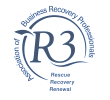If your takeaway or restaurant is struggling under the weight of mounting financial distress, taking the advice of an insolvency practitioner at an early stage could make all the difference.
Seeking licensed insolvency support is crucial if your business is in severe decline. Directors who fail to cease trading when their company is insolvent face severe penalties, and you must put creditors first.
Knowing when the company has become insolvent can be difficult, however, which is why early professional advice is key. You’ll also be able to find out your best options, which may be relatively wide if you seek advice at an early stage of financial distress.
Concerned about the National Insurance increase?
For the 2024-25 tax year, the rate of employer National Insurance increases from 13.8% to 15% adding yet more pressure onto already squeezed cash flows. If you are worried about the impact this could have on your company’s finances, talk to the experts at UK Liquidators. As licensed insolvency practitioners we can explain your options and help you plot a way forward. Call today on 0800 063 9262.
Creditors’ Voluntary Liquidation, or CVL, enables you to fulfil your legal duties as a company director, but could also offer you the opportunity to claim director redundancy pay. CVL is an official procedure that protects your creditors’ interests, whilst closing the company down in an orderly manner.
The process must be administered by a licensed insolvency practitioner (IP), whose main role is to ensure creditors receive as high a return as possible from the company liquidation. This is achieved by selling wholly owned business assets.
The remaining debts are written off, and unfortunately this means that unsecured creditors, such as suppliers, rarely receive a dividend from the liquidation process. Although it’s clearly not the ideal outcome for your business, CVL does offer you some control as a director, however.
You can choose when to place your company into liquidation, and also your own liquidator. A further benefit is the potential opportunity to claim redundancy pay as a director.
It’s not commonly known, but company directors may be able to claim statutory redundancy in the same way as their employees if they work under a contract of employment.
Your company must have been incorporated for at least two years, and there’s also a requirement for you to have worked for the company for a minimum of 16 hours per week in a practical role.
If your business also owes you money – perhaps your original investment – you may be eligible to make a claim. If you’re successful, you could use the redundancy pay to fund your company’s CVL.
The stringent insolvency laws in the UK mean that you need to be very careful to take the correct course of action once your business enters insolvency. If you wait for a creditor to enforce liquidation rather than taking the initiative and protecting creditor interests, you could face disqualification or even personal liability.
This is a hugely important consideration if you believe your take-away restaurant needs to be liquidated, and should guide your actions moving forward. It’s also important to consider that liquidation may not be your only option, however.
So what other measures might be available?
Start your online liquidation today
If you have decided liquidation is the right option for your limited company, you can take the first step and begin the process online using our online portal. Starting the process is quick, simple, and can be done at a time that suits you. Your information will be submitted to your local UK Liquidators insolvency practitioner who will be with you every step of the way. Click here to start your company’s liquidation online.
HMRC Time to Pay
HMRC is commonly a significant creditor in liquidation cases, and if you owe tax arrears you must contact them as soon as possible. HMRC operates a Time to Pay scheme, which involves paying your arrears in instalments over a few additional months.
Company Voluntary Arrangement (CVA)
This is a formal insolvency procedure available to viable businesses, and involves restructuring the company’s debts. This allows you to pay a single affordable sum towards your debts – typically for 2-5 years.
For more information on liquidating your take-away restaurant, and an assessment of other potential options, please contact our expert team at UK Liquidators. We offer same-day consultations, and will be able to let you know if you’re eligible for director redundancy.
If you are considering liquidation for your limited company, taking advice from a licensed insolvency practitioner can help you understand your options.
Take our 60 second test and find out
If you are considering liquidation for your company, taking expert advice at an early stage is crucial. At UK Liquidators, our team of licensed insolvency practitioners are committed to providing limited company directors with the help and advice they need to make an informed decision.




Looking for immediate support?
Complete the below to get in touch